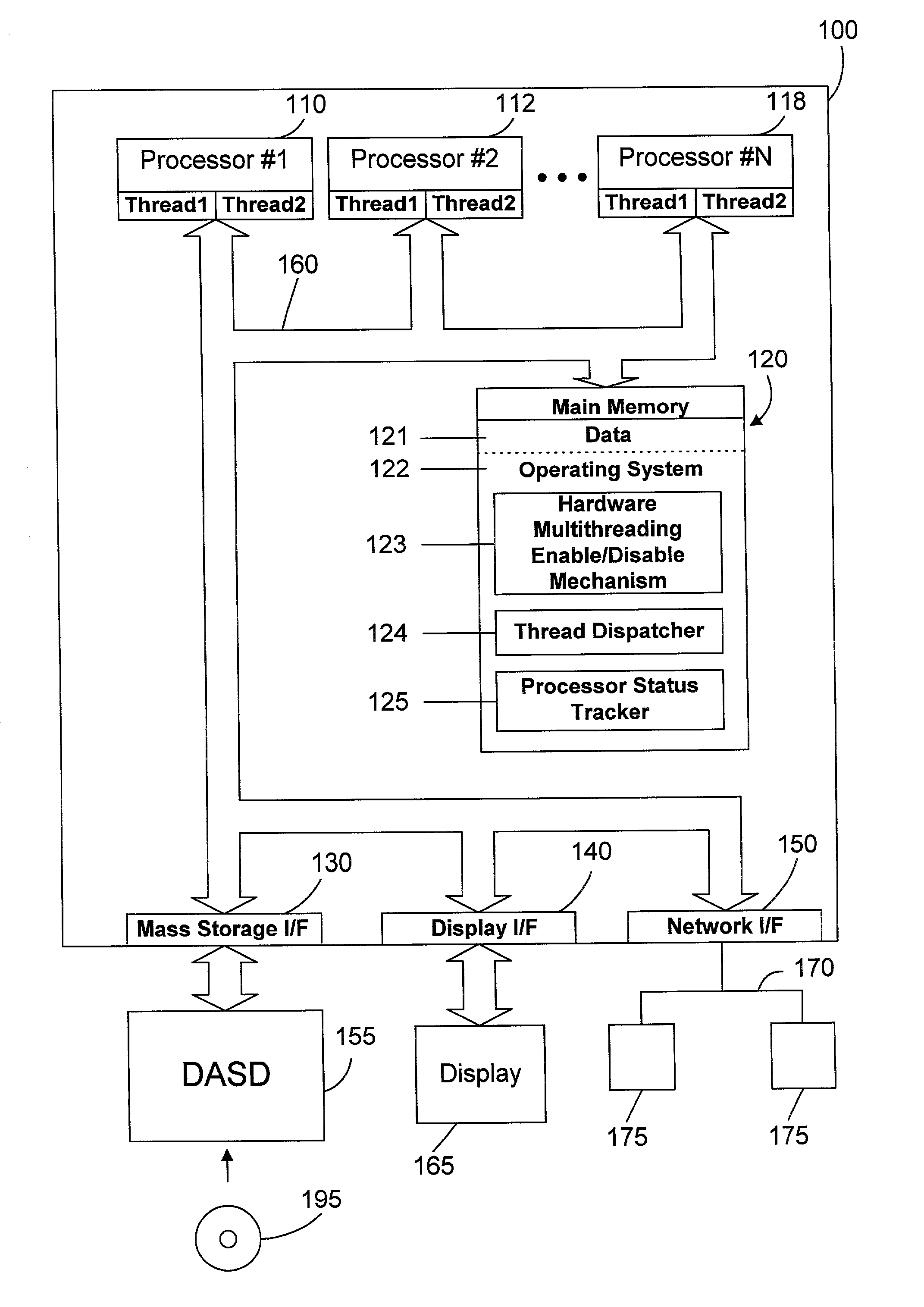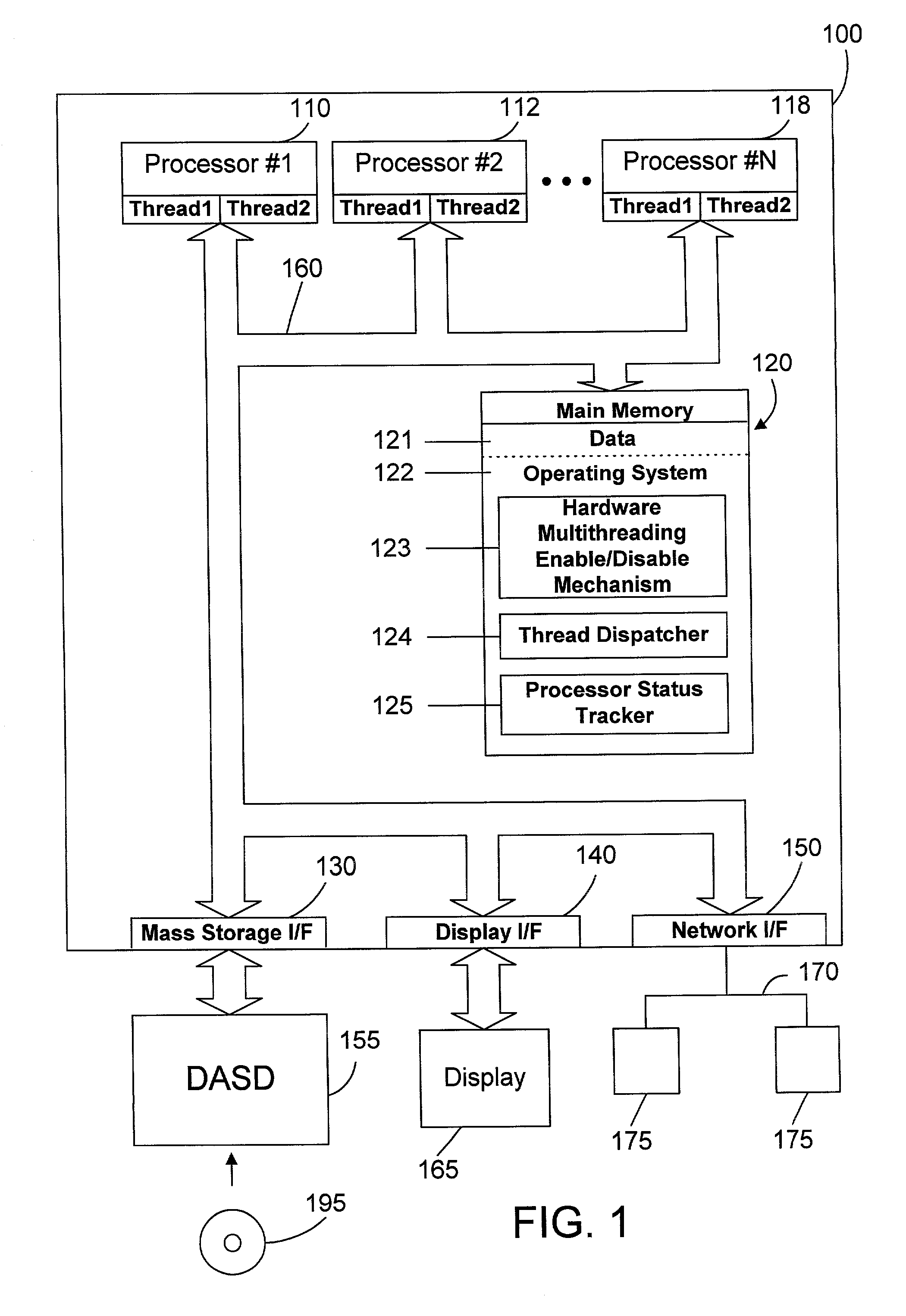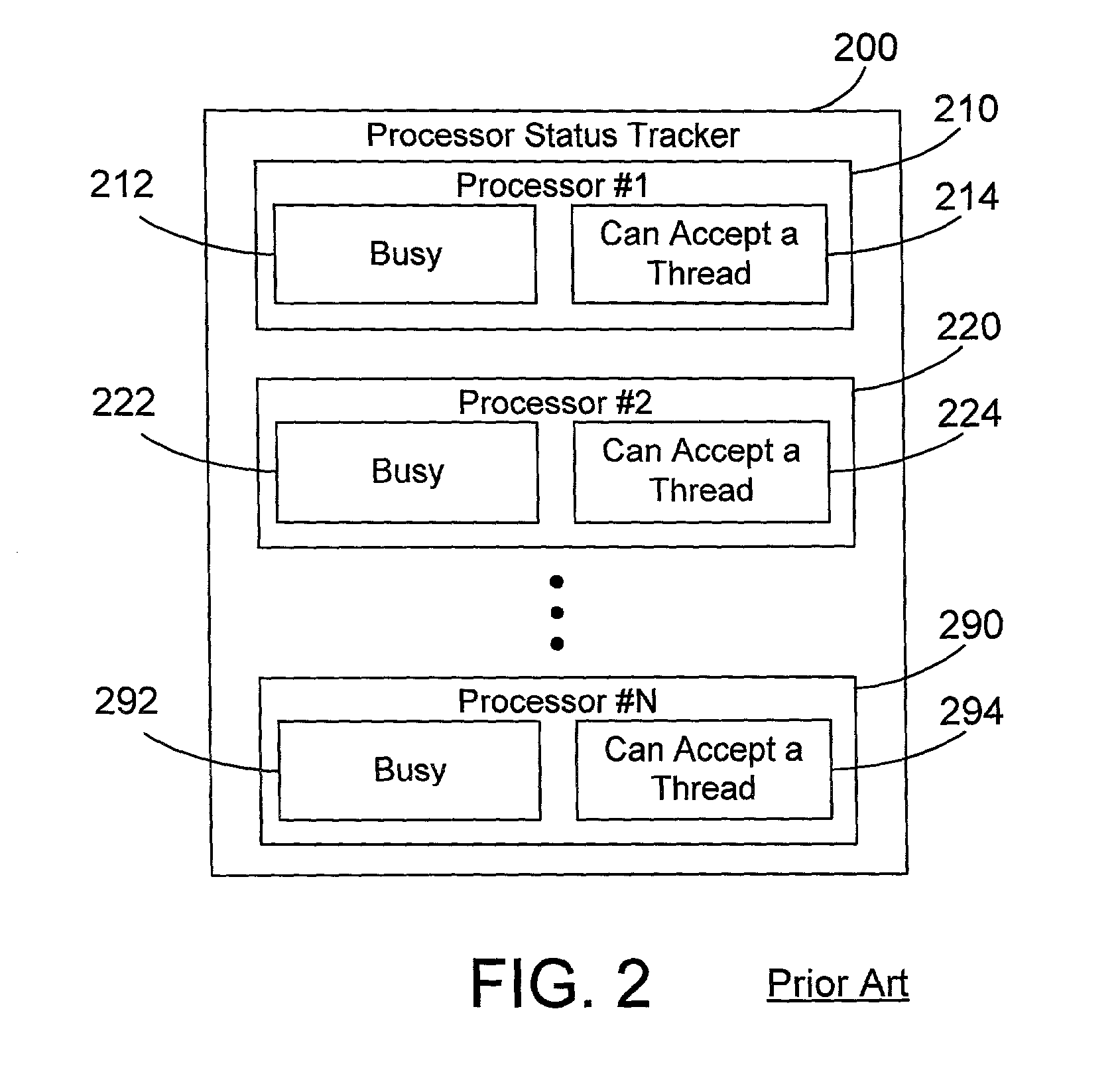Thread dispatch mechanism and method for multiprocessor computer systems
a multi-processor computer system and thread dispatching technology, applied in the field of computer systems, can solve the problems of system failure to meet the specjbb2000 benchmark, benchmark failure, etc., and achieve the effect of minimizing thread spread, minimizing thread spread, and relatively small time slice between i/o operations
- Summary
- Abstract
- Description
- Claims
- Application Information
AI Technical Summary
Benefits of technology
Problems solved by technology
Method used
Image
Examples
Embodiment Construction
[0026] The preferred embodiments provide a mechanism and method of dispatching threads in a multiprocessor system that has hardware multithreading enabled that greatly reduces thread spread (i.e., the variability of execution time and transaction processing rate between threads). This is done by monitoring processors to determine which are idle, which are busy processing one or more threads but could still accept another thread, and which are already busy processing the maximum number of threads. When a thread needs to be dispatched, it is dispatched to an idle processor, if present. If there is no idle processor, the thread is dispatched to a processor that is executing the fewest threads. In this manner, the variance of time to execute different threads is significantly reduced, allowing a multiprocessor system in accordance with the preferred embodiments with hardware multithreading enabled to pass the SPECJBB2000 benchmark and to provide more consistent response times and throug...
PUM
 Login to View More
Login to View More Abstract
Description
Claims
Application Information
 Login to View More
Login to View More - R&D
- Intellectual Property
- Life Sciences
- Materials
- Tech Scout
- Unparalleled Data Quality
- Higher Quality Content
- 60% Fewer Hallucinations
Browse by: Latest US Patents, China's latest patents, Technical Efficacy Thesaurus, Application Domain, Technology Topic, Popular Technical Reports.
© 2025 PatSnap. All rights reserved.Legal|Privacy policy|Modern Slavery Act Transparency Statement|Sitemap|About US| Contact US: help@patsnap.com



